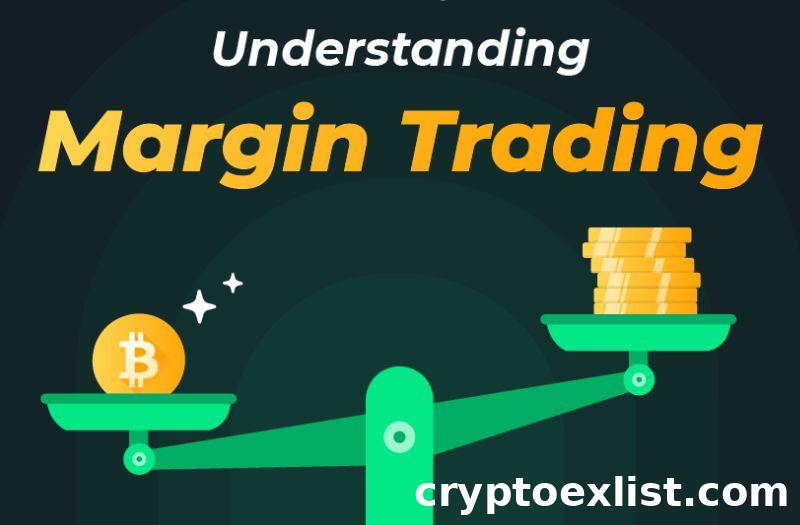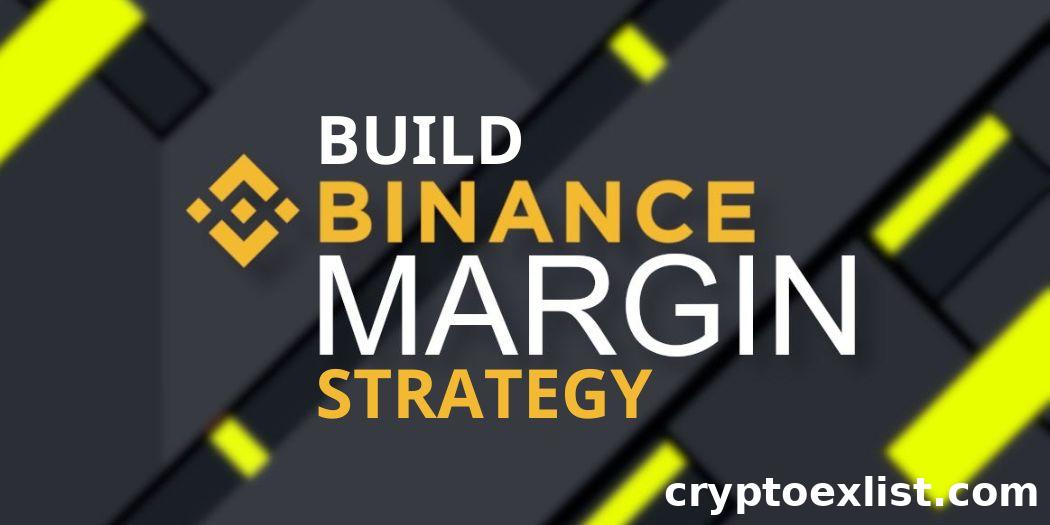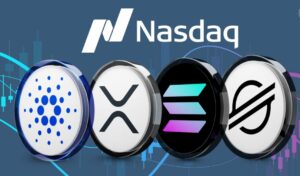
Margin trading opens up exciting opportunities for traders by allowing them to leverage their capital and take larger positions than they could with just their own funds. However, with great reward comes great risk, and understanding the key concepts and strategies behind margin trading is essential to success. This guide breaks down the fundamentals of margin trading, from how it works to the strategies needed to manage risk, choose the right assets, and execute trades effectively. Whether you’re a beginner or looking to refine your approach, mastering these principles will help you navigate the world of margin trading with confidence.
Introduction to Margin Trading
What is Margin Trading?
Margin trading is a method that allows traders to borrow funds from an exchange, like Binance, to increase their trading positions. This enables traders to control a larger position with less of their capital, potentially amplifying both profits and risks. On Binance, margin trading provides access to various cryptocurrencies, allowing users to trade with more flexibility than in spot trading. By borrowing funds, traders can take advantage of both rising and falling markets, making margin trading an attractive option for those looking to maximize their opportunities.
How Margin Trading Works
The basic concept behind margin trading is borrowing capital to trade more than your initial investment allows. On Binance, margin traders deposit assets into their margin account, which acts as collateral for the funds they borrow. Once borrowed, these funds can be used to open larger trading positions in different cryptocurrencies. Depending on the leverage used, traders can amplify their potential gains, but it’s important to remember that losses can also be magnified if the market moves against your position. Managing leverage and understanding how much you borrow are critical for success in margin trading.
Benefits of Margin Trading
One of the biggest advantages of margin trading is the ability to increase your buying power. By borrowing funds, traders can take larger positions in the market and potentially achieve higher returns than they would with spot trading. Additionally, margin trading allows for short-selling, which means traders can profit from both rising and falling markets. Another benefit is the opportunity to diversify investments without needing to allocate a large amount of capital upfront. This flexibility makes margin trading a powerful tool for more experienced traders looking to expand their portfolios, though it comes with increased risks that require careful management.

Key Concepts in Margin Trading
Leverage Explained
One of the most essential aspects of margin trading is leverage. Leverage allows you to borrow funds to increase the size of your trading position beyond what you could afford using only your capital. For example, if you use 5x leverage, you can control a position that is five times larger than your initial investment. This can significantly magnify your profits if the trade goes in your favor. However, leverage also increases risk, as losses are amplified in the same way. On Binance, traders can select different levels of leverage depending on the asset and their risk tolerance, making it important to understand how leverage works before using it to trade.
Margin Call: What You Need to Know
A margin call occurs when the value of your assets in a margin trade falls below a certain threshold, prompting the exchange to require additional funds to maintain the position. Essentially, it’s a warning that your account is running out of collateral due to losses. If the market moves against your position and your collateral isn’t enough to cover the borrowed funds, Binance will issue a margin call, asking you to deposit more assets to avoid liquidation. To manage the risk of margin calls, traders should monitor their positions closely and set stop-loss orders to protect against unexpected market movements.
Liquidation and Its Implications
Liquidation happens when your account’s equity falls below the maintenance margin level, and you’re unable to meet a margin call. In this case, Binance will automatically sell off your assets to cover the borrowed funds, resulting in the closing of your position. Liquidation can lead to significant losses, especially if the market moves quickly, and it’s important to remember that you can lose more than your initial investment in margin trading. To avoid liquidation, maintaining a healthy balance of collateral and using lower levels of leverage are critical strategies. Keeping an eye on market conditions and being prepared to act quickly can also help traders minimize the risk of liquidation.
Developing a Margin Trading Strategy
Setting Goals for Margin Trading
When starting with margin trading on Binance, it’s essential to have clear, well-defined goals. Whether you’re looking for short-term gains through quick trades or aiming for long-term profits by holding leveraged positions, having a clear plan will guide your decision-making. For beginners, setting achievable goals such as improving trading skills, understanding market trends, or gaining confidence in managing leverage can be valuable steps. Advanced traders might focus on maximizing profits by capitalizing on market volatility. Regardless of your experience level, having a concrete goal helps you stay focused and reduces impulsive decisions in a fast-moving market.
Risk Management Techniques
Risk management is a crucial component of any margin trading strategy. Since margin trading involves borrowing funds and using leverage, the potential for loss is greater than in spot trading. To minimize risk, it’s essential to use tools like stop-loss orders that automatically close your position if the market moves against you beyond a set limit. Additionally, using lower leverage, especially as a beginner, can help protect your capital from significant losses. By carefully managing your risk and not borrowing more than you can afford to lose, you can trade more confidently, knowing that you have a safety net in place.
Diversifying Your Portfolio
A smart margin trading strategy involves not only managing risk but also diversifying your portfolio. This means spreading your investments across multiple assets rather than putting all your borrowed funds into a single cryptocurrency. Binance supports a wide range of cryptocurrencies for margin trading, giving you the flexibility to invest in different markets. By holding various assets, you can mitigate the impact of one asset’s poor performance and balance out your portfolio. Diversification also allows you to explore opportunities across different sectors of the market, from stablecoins to volatile altcoins, optimizing your potential for long-term success.

Analyzing Market Conditions
Fundamental Analysis
When it comes to margin trading on Binance, understanding the core value of an asset through fundamental analysis is crucial for making informed trading decisions. Fundamental analysis focuses on evaluating the intrinsic value of a cryptocurrency by examining key factors such as the project’s technology, its adoption rate, the development team’s reputation, and any relevant news or partnerships. For example, an upcoming network upgrade or a new partnership announcement can significantly impact the value of a cryptocurrency. By looking at these factors, traders can assess whether an asset is undervalued or overvalued, helping them decide when to enter or exit a margin trade. This type of analysis is especially important in longer-term margin positions, where a deeper understanding of the asset’s potential is essential for managing risk.
Technical Analysis
Technical analysis is another key tool for traders engaging in Binance margin trading. This method involves analyzing historical price data, charts, and trading volumes to predict future price movements. Common tools in technical analysis include candlestick patterns, moving averages, Bollinger Bands, and the Relative Strength Index (RSI). These indicators help traders identify trends, potential entry and exit points, and levels of support and resistance. For margin traders, technical analysis is essential because it provides insights into short-term market fluctuations, enabling them to optimize their leveraged positions. Mastering technical analysis can significantly improve your chances of making profitable trades by helping you time the market more effectively.
Sentiment Analysis in Margin Trading
Sentiment analysis involves gauging the overall mood or attitude of the market toward a particular asset. In the world of cryptocurrency trading, social media trends, news headlines, and community discussions can have a significant influence on market sentiment. For margin traders on Binance, understanding whether the market sentiment is bullish (optimistic) or bearish (pessimistic) can help in making strategic decisions. A sudden shift in sentiment, such as fear due to regulatory news or excitement over a new technology update, can cause rapid price movements. Sentiment analysis works best when combined with fundamental and technical analysis, providing a well-rounded view of the market conditions before entering or exiting a margin trade. Keeping track of market sentiment can help traders anticipate sharp price movements and adjust their positions accordingly.
Choosing the Right Assets for Margin Trading
Stocks vs. Options
When it comes to margin trading, one of the most important decisions is selecting the right assets to trade. Stocks and options are two common choices, each with distinct advantages. Trading stocks on margin allows you to leverage your capital and control larger positions in individual companies, amplifying both your gains and losses. On the other hand, options trading provides flexibility by giving you the right, but not the obligation, to buy or sell an asset at a specific price. While options can offer higher returns due to leverage, they are often more complex and riskier than trading stocks. For beginners, starting with stocks may offer a more straightforward path, but experienced traders can explore options to diversify their strategies.
Forex Trading on Margin
Forex trading on margin involves borrowing funds to trade currency pairs, allowing traders to take larger positions in the foreign exchange market than they could with their own capital. Since the forex market typically operates with high liquidity and 24/7 availability, margin trading in forex is popular among traders seeking short-term gains. With smaller price fluctuations compared to other assets, using leverage in forex is common, and it enables traders to amplify returns on minor price movements. However, the risk of margin calls and liquidation is still present, so risk management is essential. For those looking to diversify beyond stocks and cryptocurrencies, forex trading provides a unique opportunity to capitalize on global economic trends and currency shifts.
Cryptocurrency Margin Trading
For traders on Binance, cryptocurrency margin trading is an exciting way to enhance trading potential by borrowing funds to increase position sizes. Cryptocurrencies are known for their high volatility, which can lead to significant gains when using margin, but it also increases the risk of large losses. Binance supports margin trading for a variety of popular cryptocurrencies like Bitcoin (BTC), Ethereum (ETH), and Binance Coin (BNB), among others. Compared to traditional assets like stocks or forex, cryptocurrency markets are more volatile, which means traders need to carefully manage leverage and be prepared for sudden price swings. Selecting the right cryptocurrency to trade on margin can depend on market sentiment, liquidity, and the overall trend of the crypto market. For new traders, starting with more stable cryptocurrencies before moving into higher-risk altcoins may be a safer approach.

Executing Trades Effectively
Order Types in Margin Trading
Understanding order types is key to executing effective trades in margin trading on Binance. The three most common order types are market orders, limit orders, and stop-limit orders. A market order executes immediately at the current market price, which is useful when you need to enter or exit a trade quickly. A limit order, on the other hand, allows you to specify the price at which you want to buy or sell, ensuring that the trade only occurs when your conditions are met. Stop-limit orders are particularly helpful in managing risk, as they execute only when the price reaches a predetermined level, protecting you from further losses or securing profits. Understanding how to use these orders strategically helps you control your margin trades and respond effectively to market conditions.
Timing Your Trades
The success of a margin trade often hinges on timing. Market conditions can change rapidly, especially in highly volatile cryptocurrency markets. Timing your trades means analyzing market trends, understanding price patterns, and entering or exiting trades at optimal moments. Tools like technical indicators (e.g., moving averages, RSI, and MACD) can help traders anticipate price movements and identify the best entry and exit points. For instance, waiting for a confirmation of a trend before placing a trade, or selling when an asset shows signs of reversing, can improve your trade outcomes. In margin trading, where both profits and losses are amplified, mastering timing is crucial to maximizing returns and minimizing risks.
Monitoring Your Positions
Monitoring your positions closely is essential for managing risk and avoiding potential liquidation in Binance margin trading. After executing a trade, it’s important to regularly check your open positions to ensure that market conditions haven’t changed unfavorably. Binance provides real-time data and tools like price alerts to help you stay on top of your positions. Setting stop-loss orders and checking your maintenance margin level can prevent margin calls or automatic liquidation. Monitoring also allows you to take advantage of favorable market movements by adjusting your leverage or closing positions at a profit. Consistently tracking your trades ensures that you maintain control over your investments, especially in volatile markets where prices can shift rapidly.
Conclusion
Margin trading offers traders the ability to amplify their returns, but it also comes with significant risks. By understanding how leverage works, managing risk effectively, and selecting the right assets for margin trading, you can develop a successful strategy. It’s essential to combine various types of analysis—fundamental, technical, and sentiment—to stay ahead of the market and make informed decisions. Remember, timing and monitoring your trades are crucial to avoiding pitfalls like margin calls or liquidation. Armed with the right knowledge and a solid plan, margin trading on platforms like Binance can be a powerful tool in your trading arsenal.























